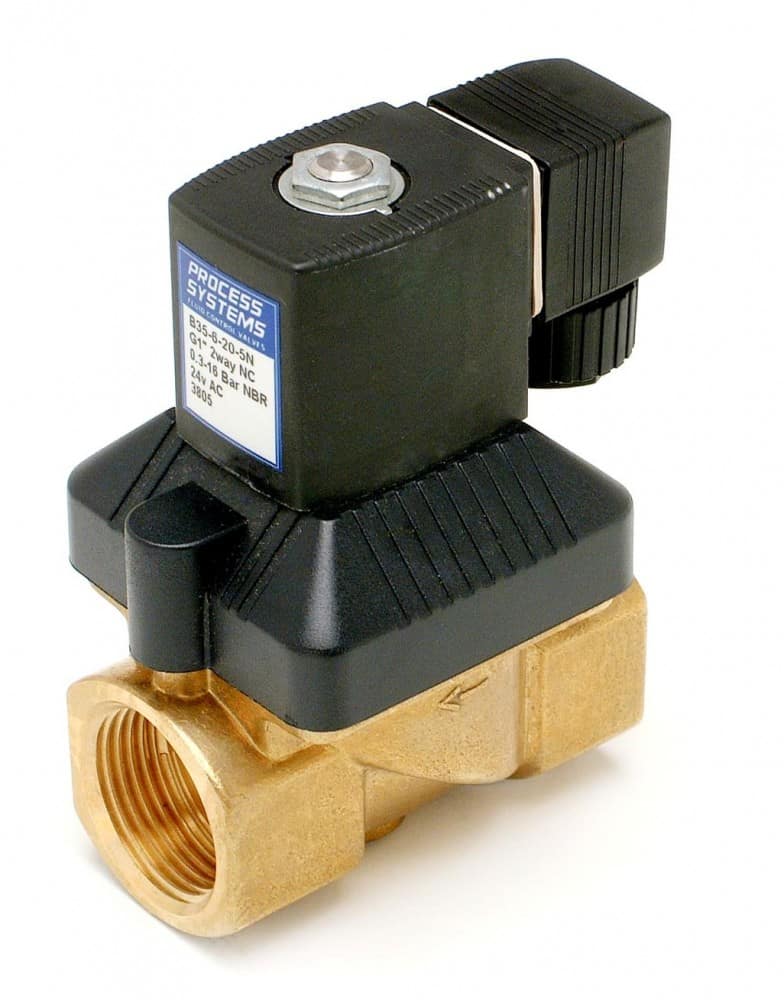 Solenoid valves act as an electromechanical device with a current running through the coil in the valve, this flow of current causes the formation a magnetic field used in controlling the flow of liquid or gas powered tools and systems. This type of valve is used to control the shut off, discharge, dose, or combine fluids or gasses. Solenoid valves provide a risk free switching, and increased dependability with its long duration of service. It has an excellent medium compatibility with materials and an efficient design.
Solenoid valves act as an electromechanical device with a current running through the coil in the valve, this flow of current causes the formation a magnetic field used in controlling the flow of liquid or gas powered tools and systems. This type of valve is used to control the shut off, discharge, dose, or combine fluids or gasses. Solenoid valves provide a risk free switching, and increased dependability with its long duration of service. It has an excellent medium compatibility with materials and an efficient design.
In selecting a solenoid valve make sure of the duration of its response as well as the duration of the valve to be energized. For on and off cycling it is advised to choose nonstop total duty valves as they are made to withstand the pressure of constant usage. To choose the right type of solenoid valve, make a comparison of all of its functions. The highest amount operating pressure it can withstand must be equal or more than the pressure required for the valve to work.
Below are the things to consider in choosing a Solenoid Valve.
Identify the type of valve to use
· Direct Acting Valve- This kind of valve relies on the level of the active current in the coil to work properly. The valve opens and closes withstanding the flow and pressure of the liquid or gas provided that it does not exceed the maximum pressure available.
· Pilot Operated Valve- This type of valve comes with a pilot and main valve seats, the top portion of the valve is made up of the pilot seat with a corresponding orifice. The pilot operated valve needs full power to both open and be kept open, though it requires less electrical power to work.
· Two Way Valve- This valve’s ports are used interchangeably to operate the opening or closing of the valve. It can be indicated as whether a normally open valve or normally closed valve. Normally closed solenoid valves are commonly used, kept closed awaiting for an active source for it to be opened.·
· Three Way Valve- The three way valve has three ports and two orifices, one of which is open while the other stats closed at all times. This valve interchangeably applies and exhausts pressure and is indicated with three statuses normally closed, normally open, or universal.
· Four Way Valve- By its name this valve has four ports. It is either indicated as being normally closed, normally opened, or universal. This kind of valve is normally used with two acting cylinders or two actuators. Two of the ports in this valve exert pressure while the other two exhausts pressure.
Flow Rate
Determine the required flow rate for the application, in order to correctly choose a solenoid valve. Make sure to know how much flow is really needed if the valve is too large for its use, as you will be wasting liquid/air and money, and if it’s too small the actuator won’t properly function.
Power Requirements
The amount of voltage or wattage needed, knowing that can help you choose the right kind of solenoid valve to use for the application. Take note though that the flow is limited by the valve’s orifice, bigger orifices tend to require more power to use.
For example if your use requires high flow rates and low power supply, then you should consider using a pilot operated valve as it is best used in those kind of power requirements.
Electric Connector
How will the solenoid valve be connected in your pneumatic circuit? Whether you choose a spade connector or flying leads it all depends of personal preference. Both are easy to install, but choosing a combination of both can simplify the need of any necessary valve replacements.
Operating Pressure
Review the operating pressure presented to you by the valve’s manufacturer. Since operating pressure has a great effect on the flow rate of the valve, determining the operating pressure can help you choose a valve that will perform as required depending on application.
Port Size
Review the port sizes in the base or manifold to ensure the correct valve fittings are bought. Solenoid valves need to be installed in a single base or multiple-station manifold to allow air into the circuit. Depending on the application choose the appropriate fittings for connecting the tubing lines to ensure that the valves are securely placed.















Leave a comment